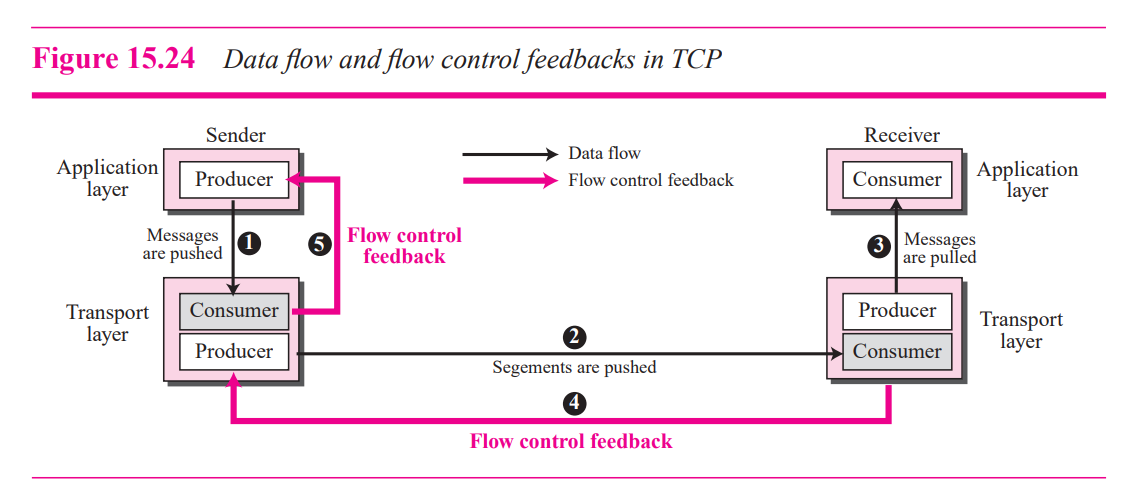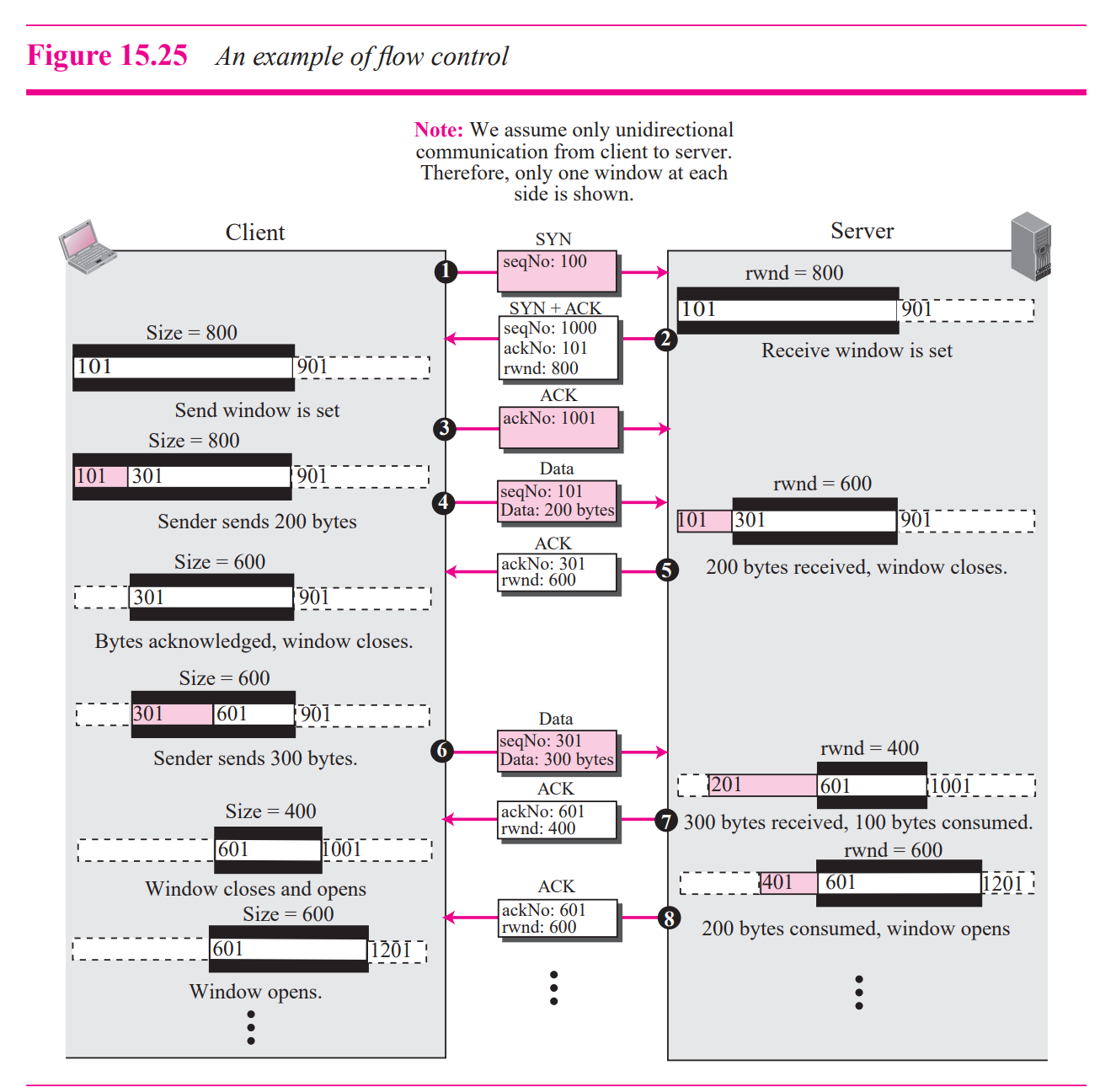reference : Tcp/IP Protocol Suite/Forouzan, Behrouz A.
Flow Control
- flow control balances
- the rate a producer creates data with
- the rate a consumer can use the data
- TCP seperates flow control from error control
- we assume that tcp is error free

- flow control feedback
- receiving TCP -> sending TCP -> sending process
- most implements of TCP don’t provide flow control feedback from the receving process to receiving TCP
- sending TCP -> sending process
- achieved through simple rejection of data by sending TCP
- when its window is full
- achieved through simple rejection of data by sending TCP
- so we will focus on “receiving TCP -> sending TCP”
Opening and Closing window
- TCP forces the sender and receiver to adjust their window sizes
- receive window
- close : more bytes arrive from the sender
- open : more bytes are pulled by the process
- send window
- close : when new ack allows it to do so
- open : when rwnd(from revceiver) aloow it to do so
- receive window size

Shrinking of window
- send window can shrink if the receiver defines a value for rwnd
- but receive window can’t shrink
- some implementations don’t allow the shrinking of the send window
- so the receiver needs to keep the following relationship
- so does not allow the right wall ofr the send window to move to the left
- the left side of the inequality represents theh new position of the right wall
- the right side shows the old position of the right wall
- if you violate this mandate, it causes the following problem

ackNo = 216 seems to be typo
- sender sent bytes 206~214
- 206~209 are acked and purged but new rwnd value is 4.
- shrink!
- byte 214 has been already sent is outside the window
- the receiver does not know which of the bytes 210 to 217 has already been sent
- one way to prevent this situation
- receiver should wait until more bytes are consumed by its process
- to meet the relationship above
Silly Window Syndrome
- this problem can arise in the sliding window op when either
- sending application creates data slowly
- receiving application consumes data slowly
- or both
- if TCP sends segments containing only 1byte of data
- it needs 41byte datagram
- 20bytes - tcp header
- 20bytes - ip header …
- overhead 41/1
- it needs 41byte datagram
- The inefficiency is even worse after accounting for the data link, physical layer overhead
Syndrome created by the sender
- when the sender creates data slowly, it cause the silly window syndrome
- The solution is to prevent the sending TCP from sending the data byte by byte
- TCP must be forced to wait and collect data to send in a larger block
- How long wait?
- too long -> delay system
- not enough -> syndrome again
Nagle’s Algorithm
- TCP send the first piece of data it received from the app
- even if it is only 1 byte
- After sending the first segment, TCP accumulates data in the output buffer.
- wait until
- receiving ACK for first segment
- enough data has accumulated to fill maximum size segment
- wait until
- repeat
Syndrome create by the receiver
- Suppose
- the sending program create data in blocks of 1kb
- receving program consumes data 1byte at a time
- receving buffer of reveving TCP is 4kb
- the sender sends the 4kb of data
- the receving buffer is full
- it advertises a window size of zero
- sender should stop
- the 1 byte consumed by receiver
- now there is 1 byte of space in the receving buffer
- announce window size of 1 byte
- sending TCP which is eagerly waiting to send data sends a segment carrying 1byte
- silly window syndrome again…
Clark’s Solution
- send an ack as soon as the data arrive
- but set rwnd to “zero”
- untile either there is enough space to accommodate a seg of max size or least half of the receive buffers is empty
Delayed Ack
- delay sending the ack
- when a segment arrives, not ack immediately
- wait until there is a decent amount of space in its incoming buffer
- delaying ack prevents the sending TCP from sliding its window
- also has another advantage
- reduces traffic
- however there also disadvantage
- sender unnecessarily retransmitting the unacknowledged segment
- TCP balances the adv, disadv
- should not be delayed by more than 500ms